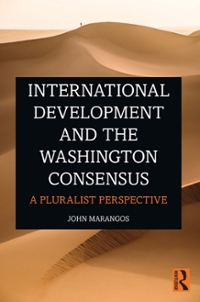With specific reference to the article "China Eases Limits on Births as Labor Market Shortage Looms" (November 16, 2013) explain and demonstrate in a production possibilities diagram how the easing of China's "1-child per family" policy initiated in 2013 might affect China's future production possibilities frontier (PPF) in the decades to come.Label the axes of your PPF diagram "Guns" (Defense goods) and "Butter" (Non-Defense goods) and explain in words and demonstrate in your graph the change(s) to China's PPF that you envision.
Companies manufacturing or operating in China have already seen their profits diminish as the supply of labor -- seen as China's most competitive advantage in attracting foreign companies to its turf -- tightens. The predicament has caused experts to wonder if the world's No. 2 economy would grow old before it gets rich. Population experts said the latest move, while positive, fails to fully steer China away from the demographic crisis. China Eases Limits On Births As Labor Shortage Looms FROM THE WALL STREET JOURNAL 11/16/13) "The entire policy should have been abolished," said Liang Zhongtang. a demographer from the Shanghai Academy By Laurie Burkitt of Social Sciences. BEIJING - China is temp child policy, allowing more couples to have a second child in a a looming worker shortage. China's working-age population -- those ages 15 to 64 -- is drastically shrinking: From 2010 to 2030, China's labor Couples will be able to have ccording to a wide-ranging Communist force is expected to lose 67 million workers -- more than the entire population of France -- according to United Party reform blue in a policy that has defined Chinese family life out of leaders' recent party conclave. Nations projections. for more than three decade Previous exemptions mainly allow minorities to have more. Children expected to be born as a result of the policy shift will add modest growth -- 1 million to 2 million births over Couples consisting of two only children we ptions to many more the next three years, population experts estimate, and, they won't enter the workforce for another 20 years. couples, chiefly urban ones who have see controls. There's no exact optimum number to add," said Mr. Wang, adding that the maximum 2 million won't be enough to The shift comes after years of high-level debates a ase who have been pushing Beijing for make up for already declining birthrates. change as game-changing "It's a historic moment in the life of this infamous policy." said Wang Feng, a demographer at Fudan University in The one-child policy has appeared increasingly out of place in a society where social mobility and individual Shanghail. freedoms have greatly expanded in the past decade. Tired of waiting for change, many better-off Chinese have had He and other experts said Chinese second children, either by going abroad to circumvent rules, or by paying hefty fines. amid increasingly vocal criticism of Beijing's handling of a number of social iss crete change on problems such as poor medical care and pollution sakneck growth. The policy drew nationwide p eared on the Internet showing a fully formed fetus lying in a pool of blood next to its mother, who was forced to have an abortion. The family later agreed This is the only concrete policy change." said Cheng Li, an Institution. For the authorities. he said, "It's a very good to accept more than $1 1,000 in compensation from the government. However, demographers say the shill com crisis in a rapidly aging society The ripples of the policy change may be felt as far away as the fields and processing plants of the U.S. Farm Belt, There are many people in China like Cui Min, who to have several children. "I know how lonely it is which has already been shipping a growing share of its soybeans, pork and other products to feed China. to be a single child." said Ms. Cui, a 31-year- ther of a one year-old girl. "I don't want my daughter to feel the loneliness I did," she said. Even with the right to have more children, recent research on the impact of the one-child policy's various Initiated in 1980, the policy was intended to rein in ex exemptions suggests fewer Chinese want them. The Shanghai government found in a 2012 survey that couples ation growth and help raise living standards. In doing so. it also led to a host of problems - ation forced upon women by officials to meet born after 1980 are willing to have only 1.2 children on average. The average number of children born per couple in en of elderly care on single children. the city is 0.7. well below the rate of population replacement, according to census data. Mr. Wang and other population experts have argu ears that the gov was running out of time to change course. Birthrates had already fallen Better educated Chinese, like Shanghai bank employee Sun Wei, cite higher costs of living and raising a child as ities to levels below that needed to replace the current population. If left unchecked, they said, the labor force would shrink, p issuring wages, and fewer workers would be reasons for not having a second. The 28-year-old and his wife are allowed to have another child under the new taking care of a growing elderly population. policy, but likely they won't. "Having another kid means extra financial pressure," said Mr. Sun "As the cost of raising a child increases dramatically, people care more about the quality of a child's life, not the number," said Mao Zhuoyan, a researcher at the National Health and Family Planning Commission, which enforces the policy.Still, many lament that neither they nor their parents were given this opportunity earlier. One user on China's Twitter-like Sina Weibo said, "So many years later, after a generation under the policy are already dying. then you can have another child." . China Eases Limits on Births As Labor Shortage Looms Tapering Off Dana's population projection








